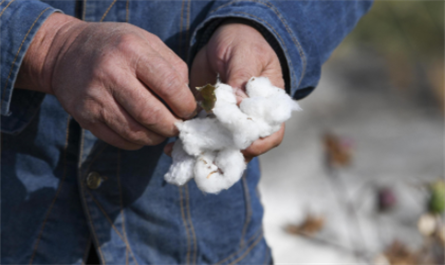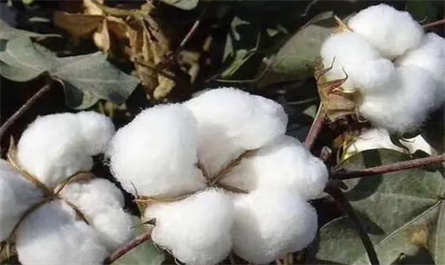Mepiquat chloride regulates crop growth controlling plant height and boosting yield
As a gentle and highly effective plant growth regulator, Mepiquat chloride achieves the dual goals of controlling plant height and boosting yield through targeted growth control. This article explains its mechanism of action, core advantages, and key usage points to facilitate scientific application.

I. Precise Regulation: Growth Control Does Not Equal Flowering or Fruiting Control
Mepiquat chloride selectively inhibits gibberellin synthesis, delaying stem elongation without affecting flower and fruit development. Examples include: spraying cherry tomatoes during the initial flowering phase promotes early flowering and fruiting, while cotton plants become compact and boll yield increases after application, demonstrating its "height control without yield reduction" strategy.
II. Four Core Advantages Unlock the Key to High Yield
1. Gentle Regulation and Safer
Compared to Paclobutrazol (Paclo) (soil residue) and Chlormequat Chloride (fruit shrinkage risk), Mepiquat chloride is highly reversible. Overdose can be mitigated by spraying with Gibberellic Acid (GA3) or increasing watering and fertilization.
2. Bidirectional Regulation Promotes Balance
Mepiquat chloride inhibits stem and leaf development while promoting root development: Cotton stems shorten, but the root system develops, enhancing drought resistance. Spraying grapes with this product increases the number of secondary flowers.
3. Flower and Fruit Enhancement: Increases Yield and Quality
Mepiquat chloride increases soybean 100-kernel weight and optimizes cotton boll quality. Spraying tomatoes during the initial flowering phase increases tomato yield by 15%. A split-application spraying regimen for sea island cotton yields seed cotton close to that of manual topping.
4. Double Buff for Stress Resistance and Benefit
Mepiquat chloride enhances lodging resistance (increases lignin in corn stalks), alleviates low-temperature stress (increases SOD enzyme activity in bell peppers by 1.8 times), and improves salt-alkali tolerance (increases salt-tolerance protein expression in cotton by 37%). Root biomass of cotton in drought-prone areas increases by 26%, and boll number per plant in saline-alkali soils increases by 19%.

III. Golden Combination Plan
Prohexadione calcium: Mix with wheat during the jointing phase to shorten basal internodes by 75%.
Diethyl aminoethyl hexanoate (DA-6): Spray with soybeans during the branching phase to increase yield by 52 kg per mu.
Brassinolide (BRs): After topping cotton, lateral branches are inhibited by 63% and bud retention is increased by 41%.
IV. Practical Guide: Must-Read to Avoid Pitfalls
Critical Timings: Initial Flowering/Mid-Flowering/Swelling Period (e.g., from one leaf and one heart to jointing in wheat; from 60 cm tall or 8-10 flowers in cotton).
Mepiquat chloride concentration reference: 25% aqueous solution diluted 2500 times (tomatoes); 600 L/hectare (cotton).
Common Mepiquat chloride misconceptions corrected:
① Control growth during droughts (daily plant height increases exceeding 0.8 cm in cotton).
② Darkening of leaves can be alleviated with a brassinolide/urea solution.
③ Spraying in multiple applications yields better results (e.g., for wheat, spray in two applications, reducing the total dosage by 15%).
Mepiquat Chloride achieves "vigorous but not wild, strong but not stiff" through intelligent regulation, and its scientific application can accurately protect crop yield increases.

I. Precise Regulation: Growth Control Does Not Equal Flowering or Fruiting Control
Mepiquat chloride selectively inhibits gibberellin synthesis, delaying stem elongation without affecting flower and fruit development. Examples include: spraying cherry tomatoes during the initial flowering phase promotes early flowering and fruiting, while cotton plants become compact and boll yield increases after application, demonstrating its "height control without yield reduction" strategy.
II. Four Core Advantages Unlock the Key to High Yield
1. Gentle Regulation and Safer
Compared to Paclobutrazol (Paclo) (soil residue) and Chlormequat Chloride (fruit shrinkage risk), Mepiquat chloride is highly reversible. Overdose can be mitigated by spraying with Gibberellic Acid (GA3) or increasing watering and fertilization.
2. Bidirectional Regulation Promotes Balance
Mepiquat chloride inhibits stem and leaf development while promoting root development: Cotton stems shorten, but the root system develops, enhancing drought resistance. Spraying grapes with this product increases the number of secondary flowers.
3. Flower and Fruit Enhancement: Increases Yield and Quality
Mepiquat chloride increases soybean 100-kernel weight and optimizes cotton boll quality. Spraying tomatoes during the initial flowering phase increases tomato yield by 15%. A split-application spraying regimen for sea island cotton yields seed cotton close to that of manual topping.
4. Double Buff for Stress Resistance and Benefit
Mepiquat chloride enhances lodging resistance (increases lignin in corn stalks), alleviates low-temperature stress (increases SOD enzyme activity in bell peppers by 1.8 times), and improves salt-alkali tolerance (increases salt-tolerance protein expression in cotton by 37%). Root biomass of cotton in drought-prone areas increases by 26%, and boll number per plant in saline-alkali soils increases by 19%.

III. Golden Combination Plan
Prohexadione calcium: Mix with wheat during the jointing phase to shorten basal internodes by 75%.
Diethyl aminoethyl hexanoate (DA-6): Spray with soybeans during the branching phase to increase yield by 52 kg per mu.
Brassinolide (BRs): After topping cotton, lateral branches are inhibited by 63% and bud retention is increased by 41%.
IV. Practical Guide: Must-Read to Avoid Pitfalls
Critical Timings: Initial Flowering/Mid-Flowering/Swelling Period (e.g., from one leaf and one heart to jointing in wheat; from 60 cm tall or 8-10 flowers in cotton).
Mepiquat chloride concentration reference: 25% aqueous solution diluted 2500 times (tomatoes); 600 L/hectare (cotton).
Common Mepiquat chloride misconceptions corrected:
① Control growth during droughts (daily plant height increases exceeding 0.8 cm in cotton).
② Darkening of leaves can be alleviated with a brassinolide/urea solution.
③ Spraying in multiple applications yields better results (e.g., for wheat, spray in two applications, reducing the total dosage by 15%).
Mepiquat Chloride achieves "vigorous but not wild, strong but not stiff" through intelligent regulation, and its scientific application can accurately protect crop yield increases.
RECENT POSTS
Featured News



